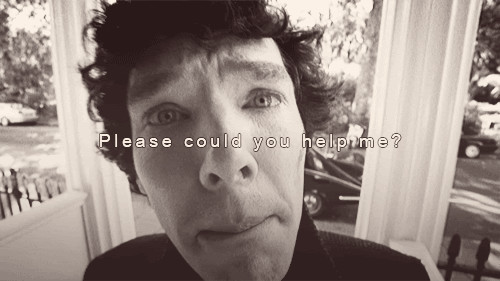When you coach in Contact Centers, you’re doing one of two things: helping people improve or simply keeping score. The difference matters more than you might think.
This article is part of our Contact Center Management Series — a collection of articles that bring together practical guidance and insights to help Contact Centers run better and deliver stronger results.
We Measure Everything
In the Contact Center industry we tend to be obsessed with measuring things.
 From Occupancy rates through to Net Promoter Score, we have dashboards and dials for everything.
From Occupancy rates through to Net Promoter Score, we have dashboards and dials for everything.
And we have a whole set of measurements just for Contact Center Agents.
Measuring Quality
One of the most important processes in the Contact Center is Monitoring & Coaching.
 We monitor Customer interactions, document our findings and talk to the Agents about their performance on the selected interactions.
We monitor Customer interactions, document our findings and talk to the Agents about their performance on the selected interactions.
Great Monitoring & Coaching improves Quality, drives better Customer Satisfaction and delivers higher Employee Engagement.
It’s a multivitamin process with lots of great benefits.
But like so many processes it only works well when it’s well designed.
Monitoring & Coaching
The Monitoring & Coaching process, like any great process, requires us to ask ourselves some important questions.
- Who should monitor interactions?
- How often should we monitor?
- What do we listen for?
- Who makes the rules for what we listen for?
- How often should we listen and how?
And when it comes to Agents –
- Who should talk to Agents?
- With what frequency should we talk to Agents?
- What is the role of Quality Assurance?
- What is the role of the Team Leader?
- When or how should a score be involved?
Wow – there’s a lot involved. But there are some answers too.
Let’s focus in on the use of scoring.
You’re Either Helping or You’re Keeping Score
In our training work, we see both Team Leaders and Quality Assurance teams sometimes become overly attached to the scorecard.
Every quality discussion with an Agent includes a score.
Even the occasional side-by-side session ends with a scorecard.
The problem? It trains Agents to ask:
What was my score?
Did I pass?
Instead of asking:
How can I write a better live chat or email?
What could I do differently next time?
When the focus shifts to passing or failing, learning stalls.
That’s the difference between helping someone get better and simply keeping score.
Scoring
Scorecards are wonderful tools for gathering and analyzing quantitative data. With quantitative data you can provide Agent performance trending.
Trending reports are a powerful developmental tool. Scores have their place. 
But only scoring on a day to day basis or fixating on scores in the Center can inhibit development and growth.
Imagine your Agent comes to you and says –
“Boss, I’d like you to help me with my communication skills. Can you sit with me and listen to a few of my calls and give me your thoughts?”
You reply, –
“Sure, give me a minute to get my scorecards – I’ve got to score everything I hear and that we talk about – be right there…”
I don’t think you would ever say this. Even writing these lines makes me cringe.
The role of a Coach within the context of transactional coaching is to help their Agent get better at having great conversations.
Since when did helping someone get better require the use of a score?
Scorecards Aren’t Behavior Change Tools

A scorecard is a judging tool — it tells you how someone did, but it doesn’t teach them how to do better.
Think of the scores flashed by Olympic judges after a skater’s routine or a diver’s performance.
The number reflects what just happened, but it doesn’t help the athlete improve.
It’s the same in Contact Centers.
If all you do is issue scorecards and hope quality improves, you’re leaving out the most important part — coaching.
Scores have their place. I am not anti-score.
But day-to-day improvement comes from timely, constructive feedback, not from a number on a page.
Helping People Changes Behavior
What the best coaches do is sit with their folks – on a regular basis – and help them get better.
It sounds like this –
Hi Mark — here’s what you did really well… and here’s one area to focus on to get better. Let’s look at some resources and set a goal for when you’ll feel confident in this skill.
This is a conversation that includes what resources to tap on and by when improvement is expected.
With absolutely no score attached.
And the more you help someone – the better they will score when the time comes. Helping pays off in better scores.
Imagine those Olympic athletes.
The more their coach helps them skate better or dive better, the more likely it is that they’ll perform better for the judges.
In the same way your Agent’s interactions will ‘perform better’ for the Quality Assurance judges.
Of course you have to know what you’re talking about when you’re helping. Your advice needs to be sound and aligned to organizational strategy.
Related reading: Your Super High Quality Scores May Be Holding Your Team Back
Closing Thoughts
When people ask me how many interactions they should monitor I ask them to rephrase the question to this –
When deciding how many interactions to monitor, ask yourself two questions:
– How many will you score for tracking and trending?
– How many will you review purely to help someone get better?
Add them together — that’s your number.
Thank You for Reading
I regularly share stories, strategies, and insights from our work across Contact Centers, Customer Service, and Customer Experience. If this resonates, I’d love to stay connected.
You can drop me a line anytime, or subscribe on our site.
Daniel Ord
[email protected]
www.omnitouchinternational.com




